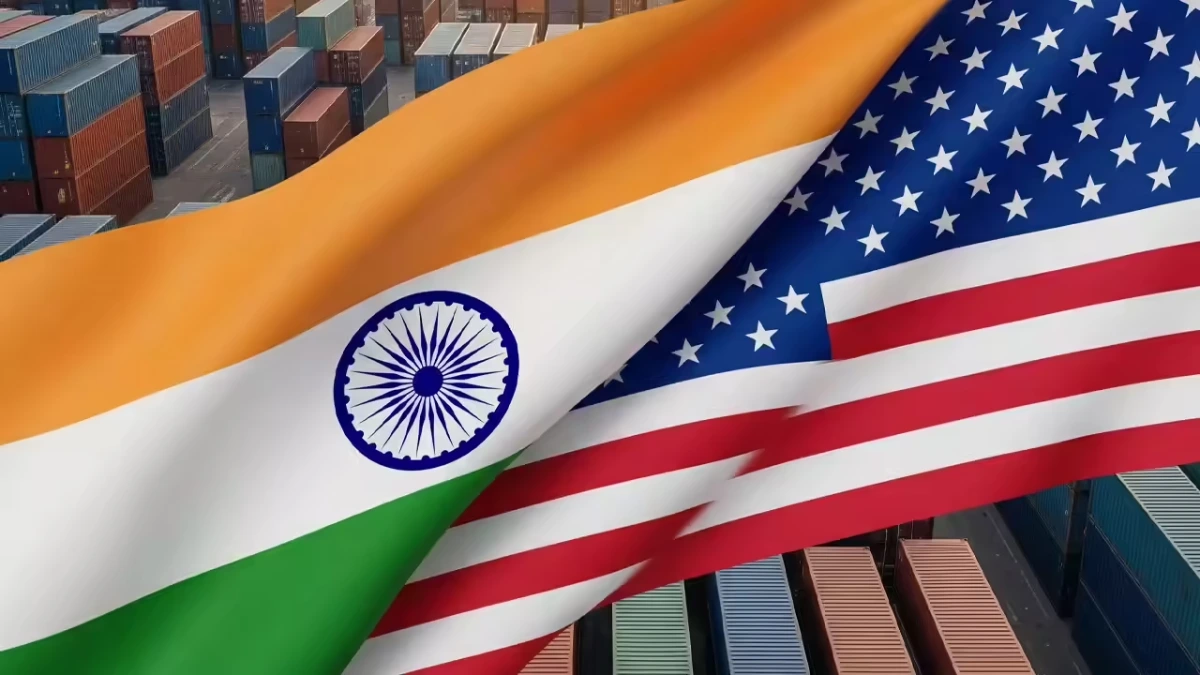
Only months before it is supposed to be finalised, US President Donald Trump’s caustic remarks about the BRICS countries have created new doubts about the long-running India-US trade deal.
Trump, the Republican frontrunner at the moment, vowed on Tuesday to levy a 10% tariff on nations that are “aligned with the anti-American policies of BRICS,” referring to their attempts to challenge the US dollar’s hegemony. Although both parties have insisted that talks are moving along favourably, the action has sparked worries about the future of commercial relations between the US and India.
Trade Deal Optimism Undermined by Tariff Action

Ironically, Trump issued his warning the day after he hinted at the possibility of a trade agreement with India, which would remove a reciprocal duty of 26% on Indian imports. But when he unveiled a comprehensive new tariff package on Wednesday that targeted 14 nations, that hope was swiftly dashed.
The hardest-hit country was Brazil, which had to pay a 50% duty on important commodities like copper. The Philippines (20%), Brunei and Moldova (25%), Algeria, Libya, Iraq, and Sri Lanka (30%), and other countries in Asia, Africa, and Eastern Europe are also impacted.
The declaration comes as tensions between Washington and the BRICS countries have been rising. Lula da Silva, the president of Brazil, reacted angrily to the additional levies, asserting his nation’s sovereignty and opposing what he described as politically motivated trade policies.
Trump Quietly Expands Trade War Strategy Across Asia to Undermine China
India-US Talks Continue Amid Uncertainty

India and the US are still in active negotiations on a possible trade agreement, despite the escalating tensions. There will likely be a fresh round of negotiations soon, with an Indian group visiting the United States to discuss the first phase of a larger Bilateral Trade deal (BTA) as well as an interim deal.
There have been multiple virtual sessions and six rounds of in-person meetings thus far. While an initial agreement was initially anticipated by July 9, talks are still going on, and both parties now want to conclude an agreement by August.
According to a recent analysis by Arihant Capital, the agreement might help India by making it a more desirable location for supply chain diversification and foreign investment, particularly when international trade routes change. The paper highlighted parallel trade initiatives like the UK-India Free Trade Agreement and EU discussions, noting that “India may benefit from relatively lower tariffs compared to many APAC nations.”
Markets Track Trump’s Trade Actions as the Tariff Deadline Draws Near
Delhi Balancing Diplomacy with Strategy

The Indian government is nevertheless taking a careful approach to the matter. It was revealed by senior diplomat P. Kumaran during a recent BRICS summit in Rio de Janeiro that Prime Minister Narendra Modi and Brazilian President Lula da Silva did not talk about the US tariffs.
However, Trump’s tough attitude on tariffs and the impending implementation date of August 1 have caused anxiety in New Delhi. A difficult geopolitical balancing act between the Modi administration’s historical participation in BRICS and its expanding strategic cooperation with Washington is now required.
Both India’s economic and diplomatic futures will depend on its ability to reach an agreement with the US while preserving relations with the BRICS countries, as the global trade landscape grows more unstable.
Final Note
Trump’s tariff threats add to the already complicated trade dynamics as the geopolitical landscape continues to change due to the emergence of BRICS and a more aggressive India on the international scene. Although both Washington and New Delhi have indicated a desire to strengthen economic ties, the United States’ recent protectionist language may impede progress and encourage India to expand its reliance on non-Western international partnerships. The future of economic relations between the US and India will be tested in the upcoming months to see if politics or pragmatism prevails.
